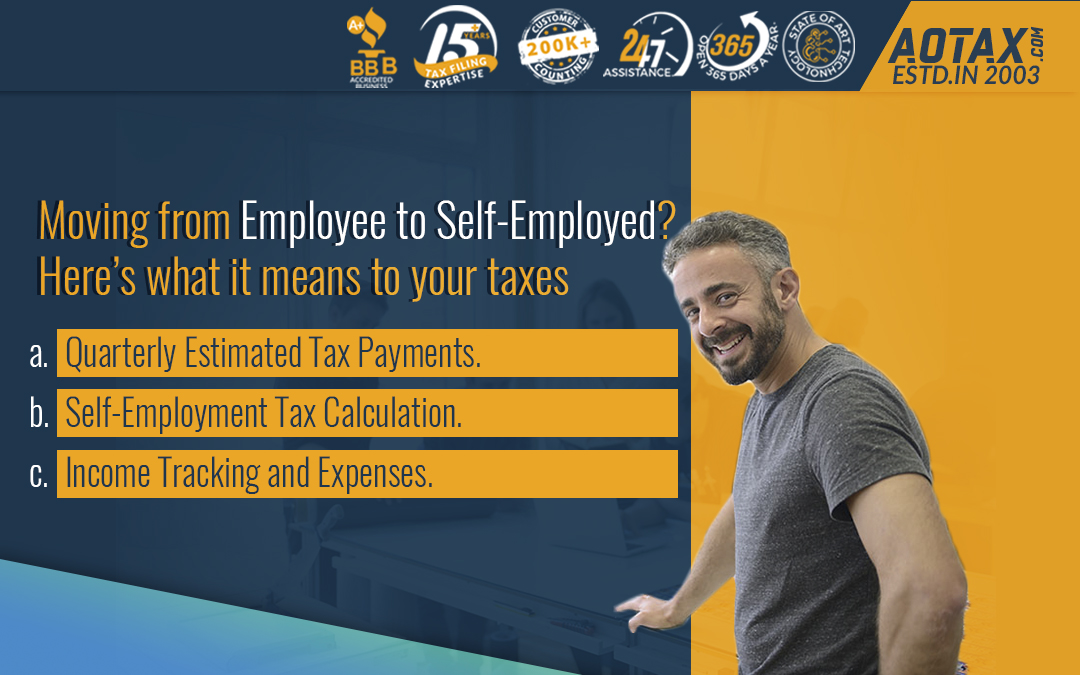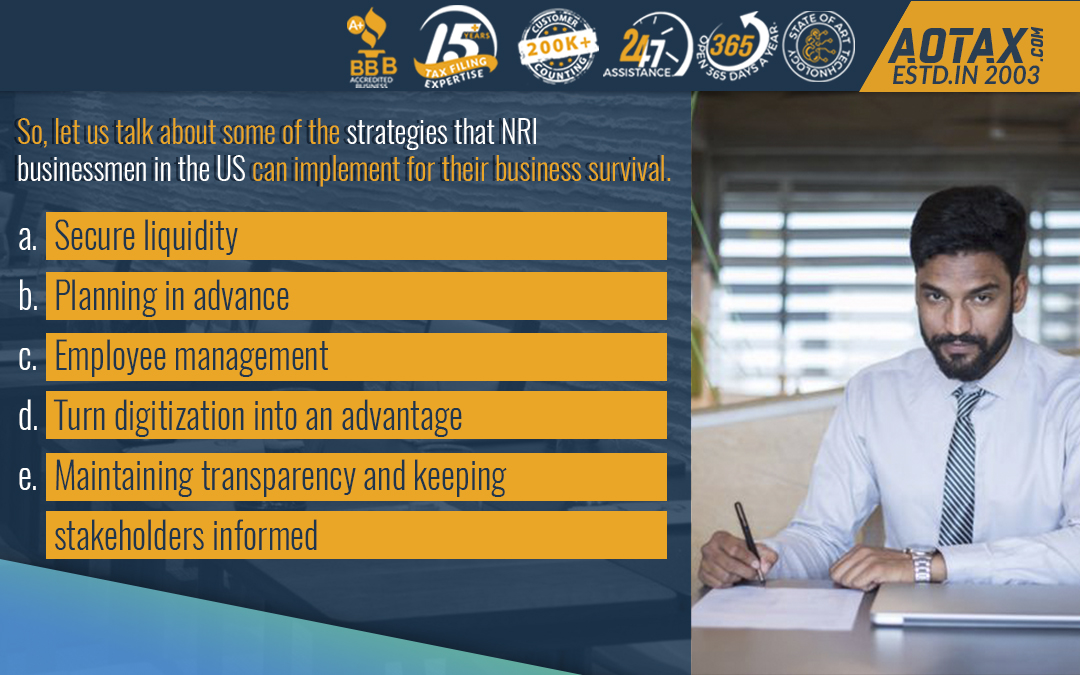Moving from Employee to Self-Employed? Here’s what it means to your taxes.
Moving from Employee to Self-Employed?
Here’s what it means to your taxes.

If you had some hobbies or areas of interest and that has turned into your side business now, then it would be an advantage for you. You would be able to make some additional income; however, you would have to think about the taxes related to the additional income earned.
You must be very well aware of your federal income taxes but you have new areas to address once you are self-employed. According to the IRS rules, you would have to report to the IRS about the expenses and the income earned from your business or self-employment. This needs to be done while filing your federal income tax returns. This process of reporting the income and expenses associated with self-employment is not very critical and can be done easily once you are aware of the steps.
Quarterly Estimated Tax Payments.
While you are an employee, your employer would be deducting withholding taxes from your salary every year. But, when you are self-employed you would have to make estimated tax payments every quarter. The general rule is that you would be expected to make a quarterly estimated tax payment if you are liable to pay $1000 or more as your annual federal tax. In case, you have a new business then an estimate of your net profit must be estimated to calculate your quarterly estimated tax. You can make use of various tools and online applications to calculate the estimated tax payments. Some of the applications can automatically calculate the estimated tax payments that need to be paid off.
The schedule for the payment of the Quarterly Estimated Tax Payments is:-
- 15th April
- 15th June
- 15th September
- 15th January of the next year
However, this year due to the COVID-19 related situations the schedule for the payment of the first and second estimated tax payment had been extended until 15th July 2020. If the 15th of the above-mentioned schedule falls on a weekend or it is a holiday, then the estimated tax payment would be made on the upcoming weekday.
Filing of the quarterly estimated tax payments or can be done by the e-filing method. Payment of your quarterly estimated tax can be done by the EFTPS (Electronic Federal Tax Payment System).
In case, you have been an employee and also owned a business during the year then you can have more amount taken from your salary so that there would be an offset in the estimated tax payment. Moreover, you must keep in mind that there are some tax credits available according to the provisions of the CARES Act. These credits have been introduced as a measure for providing relief from the adverse economic impacts caused by the pandemic COVID-19. These credits can be taken into consideration for reducing your fourth estimated tax payment.
Self-Employment Tax Calculation.
The self-employment taxes are paid by self-employed individuals for Social Security and Medical care. When you were working for an employer, you were paying FICA tax that was 7.65% of your gross income. Your employer would pay a matching percentage i.e. a total of 15.3%. But, in self-employment, you would have to pay a total of 15.3% as the self-employment tax. IRS would allow you to deduct half of your tax levied on self-employment against the income generated for federal income tax.
Income Tracking and Expenses.
For estimating your self-employment tax, you must track your income and expenses thoroughly.
Your retirement plan.
When you are self-employed, you would not have a retirement plan offered by the employer. So, you would have to save a considerable amount for your retirement.
- Individual Retirement Account (IRA) – The simplest method of setting up a retirement plan if you are a self-employed individual and have a new business.
- SEP IRA – You can contribute 25% of your net income earned from your business up to a maximum amount of $57,000.
- 401(K) plan – This retirement plan is meant for an individual and can also include your spouse.
Your health insurance.
If you are a self-employed individual, you would have the below-mentioned options for health insurance coverage.
- Your previous employer’s plan will give you coverage for 18 months.
- If your spouse has a medical insurance plan offered by his employer, then you can obtain coverage under that plan.
- Purchase a health insurance plan from the health insurance marketplace.
Conclusion.
So, self-employment can help you in bringing additional considerations related to taxes. You can also make some planning for your retirement and provide coverage for health insurance.



Recent Comments